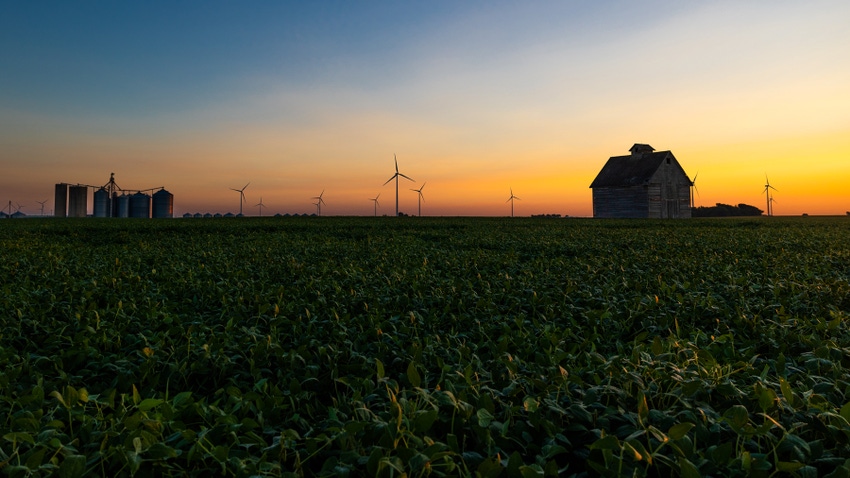
The takeaway from the most recent Illinois farmland values survey: 2022 continued to be a hot, hot year for escalating land values, with the best land up 16% over last year and up 45% since 2021 — but farm managers don’t expect that to continue into 2023.
The Illinois Society of Professional Farm Managers and Rural Appraisers released its annual farmland values survey late last week, showing continued dramatic gains in every category, including the highest-quality land that sold for an average of $16,005 per acre. Here’s a look average per-acre sales prices in each class:
Excellent. $16,005
Good. $11,871
Average. $8,359
Fair. $6,473
Recreational. $4,951
Transitional. $27,177
“My impression from this is that our farm managers do not think farmland prices are going to continue the increase,” says Gary Schnitkey, a University of Illinois ag economist who also helps compile the annual farmland survey. “If you’re betting on quick gains, that market’s over. It’s certainly not a collapse, but we’re looking at a pause.”
Taking bids
Schnitkey says their survey showed that farmers accounted for 60% of those purchases in 2022, and nearly all were local farmers. Local nonfarm investors made up 27% of buyers; local investors made up 15%; and nonlocal investors made up 12%. Institutional buyers purchased 8%.
Schnitkey believes institutional investors have backed away a little at this point in 2023. “They still view farmland as a good investment, but with interest rates, they’re maybe thinking, ‘I don’t know if now’s the time.’”
Farmers, however, have resoundingly indicated this is a great time to buy — particularly baby boomer farmers, who’ve had several good years and don’t need financing at this point in their lives. Indeed, just 58% of farmland buyers required debt financing.
“We’ve had some really good income years here in Illinois, and they’re putting that money back into farmland,” Schnitkey says.
Obviously, that puts younger farmers in a buying crunch, as they watched many local sales hit local records last year. Schnitkey says those folks have always had a hard time buying land, and it’s gotten harder.
“It takes a million dollars to buy 80 acres now,” he says. “Coming up with that cash is difficult.”
Schnitkey says the cash flow can be traced back to 2020 government payments, in the form of Coronavirus Food Assistance Program payments and Paycheck Protection Program payments, among others.
“CFAP came in around a hundred dollars an acre,” Schnitkey says, adding that the government’s motives at the time were good, given that the U.S. economy had been shut down. But the 2020 crop year turned out pretty well, followed by another good crop year in 2021 and high prices through 2022.
“I never thought I’d see $20,000 sales during my career in central Illinois,” Schnitkey says.
He’s also hopeful for a normal year in 2023, following five years of not-normal events. He points to 2018 as the start of the trade war; then 2019 saw late planting and unprecedented amounts of prevented planting. 2020 was the start COVID-19, which continued through 2021, and then Russia invaded Ukraine in 2022.
“All of those things are big shocks to the commodity markets,” Schnitkey says. “It’s hard to say anymore what a normal year looks like.”
So many sales
The farmland survey also revealed a tremendous number of land sales in 2022, up 17% from 2021 and up 58% from 2020, according to Luke Worrell of Worrell Land Services in Jacksonville, Ill. He says 25% more Class A land sold in 2022 than in 2021 and notes that 2012 was the only year they analyzed more transactions than for this report. But like Schnitkey, he expects sales to slow in 2023.
“I stood here a year ago, and 2022 was already off to the races, so we had a good sense of what would happen. I don’t have that same sense for 2023,” Worrell says, adding that the number of transactions in early 2023 pale in comparison to early 2022.
“We can all tell the market feels different,” he adds.
Like land sales, cash rent levels increased substantially from 2022 to 2023, across all land classes:
Excellent. Up $43 an acre, from $369 to $412
Good. Up $31 an acre, from $322 to $353
Average. Up $10 an acre, from $275 to $285
Fair. Up $8 an acre, from $215 to $223
Schnitkey says the survey revealed that the highest amounts of variable cash rents are occurring where a professional farm manager is involved, mostly due to the complexity of the rent structure. Variable rents made up 36% of surveyed arrangements; 27% were cash rent, and 24% were crop share.
None of the surveyed farm managers expect cash rents to increase in 2024; 36% think they will stay the same, and 36% think they will decrease.
“There’s just not enough pain yet to make cash rents come down,” Schnitkey concludes.
About the Author(s)
You May Also Like






